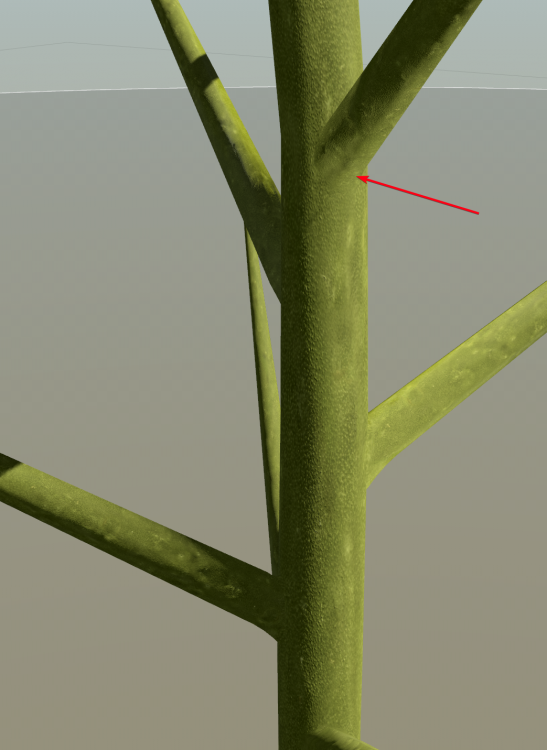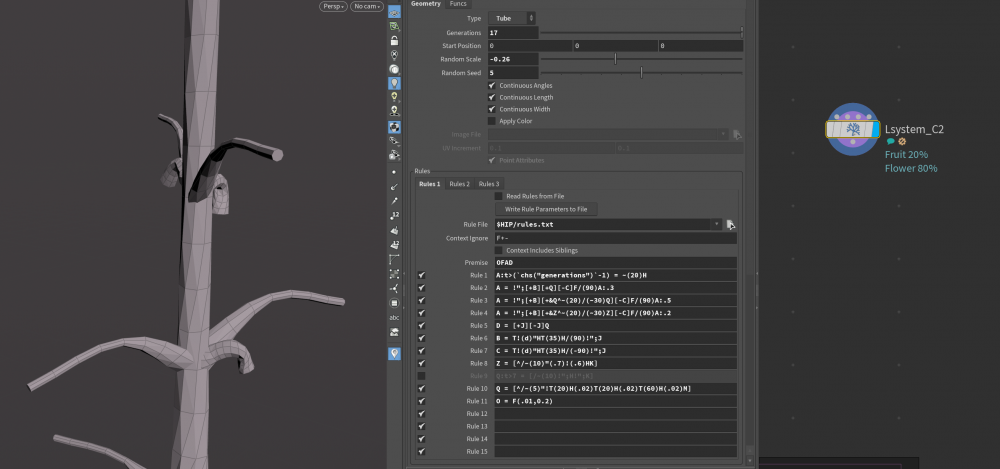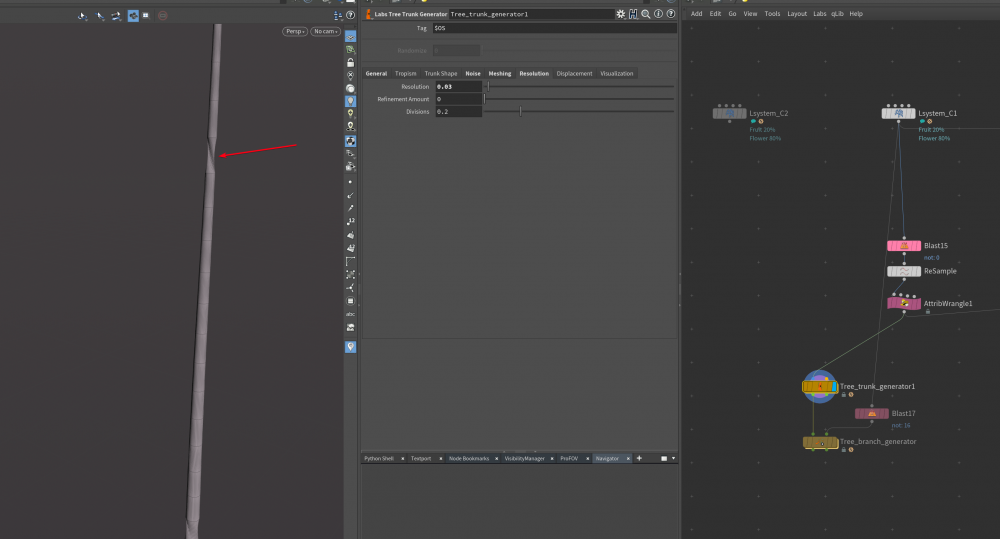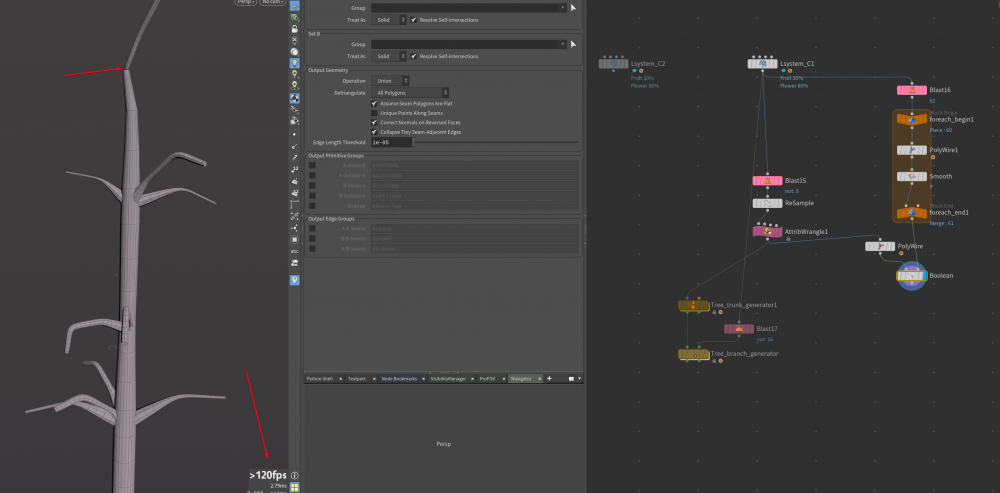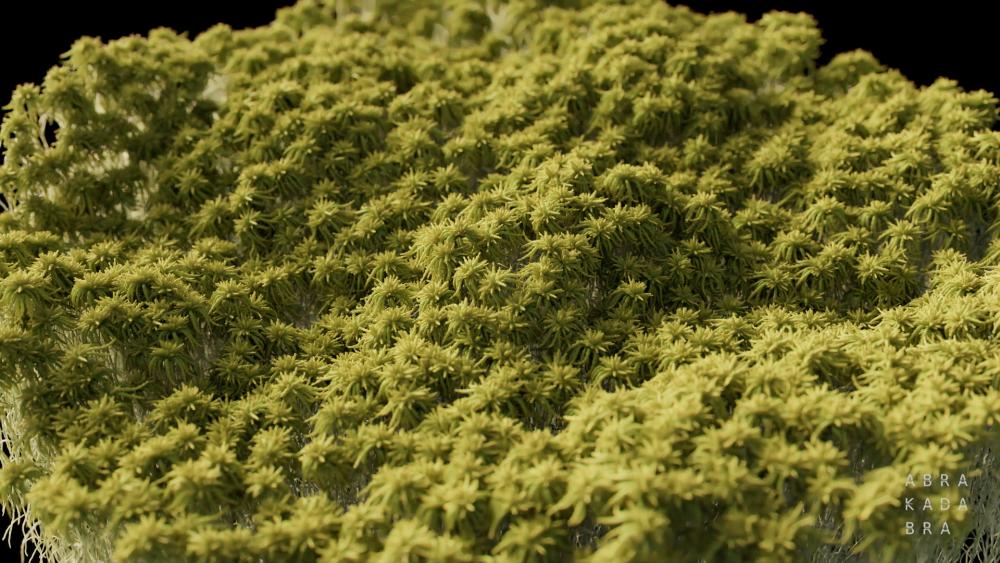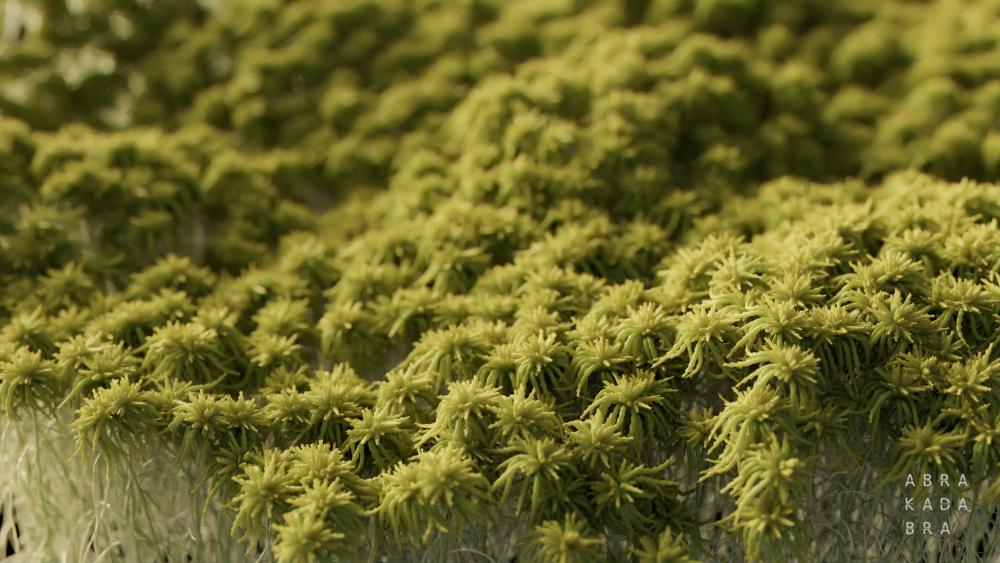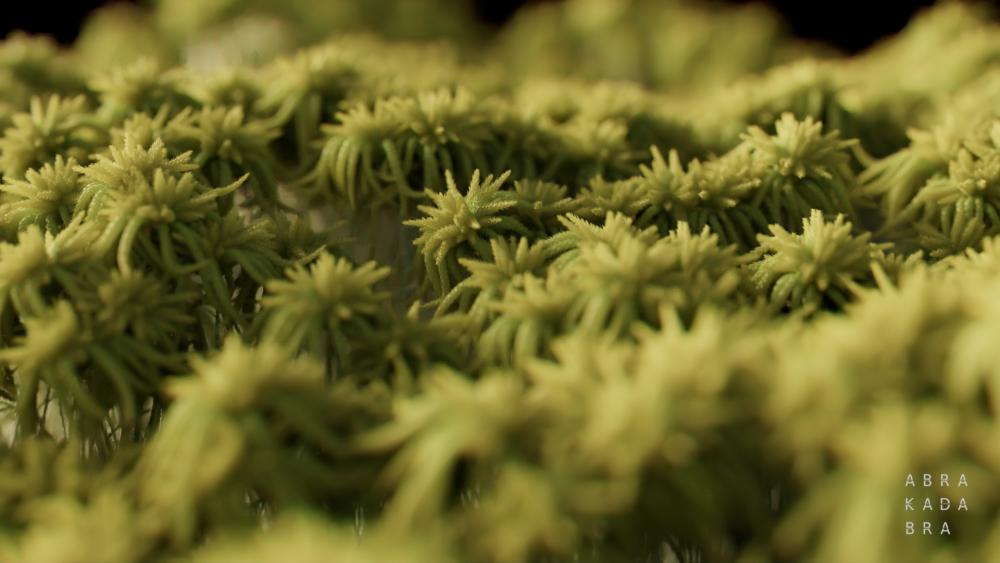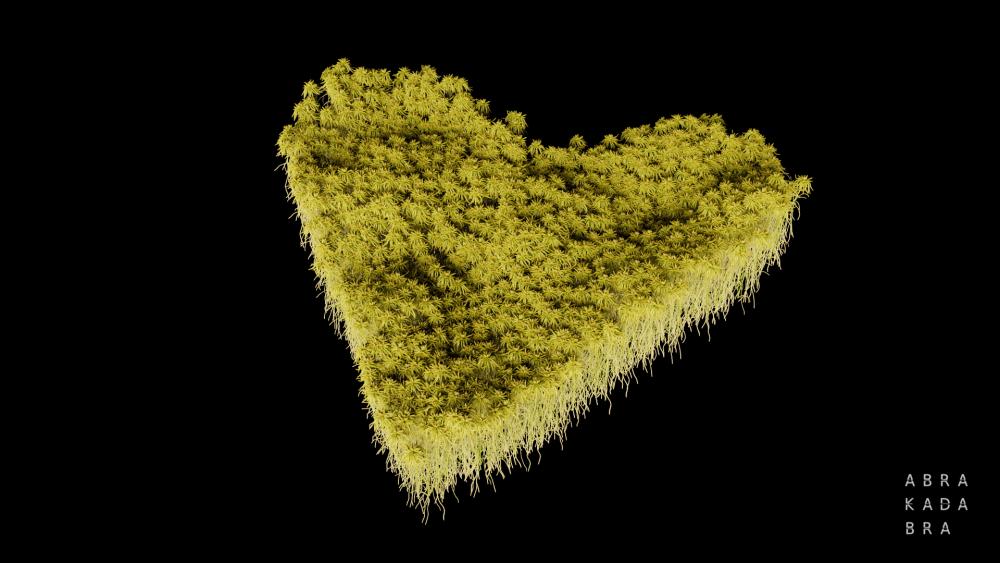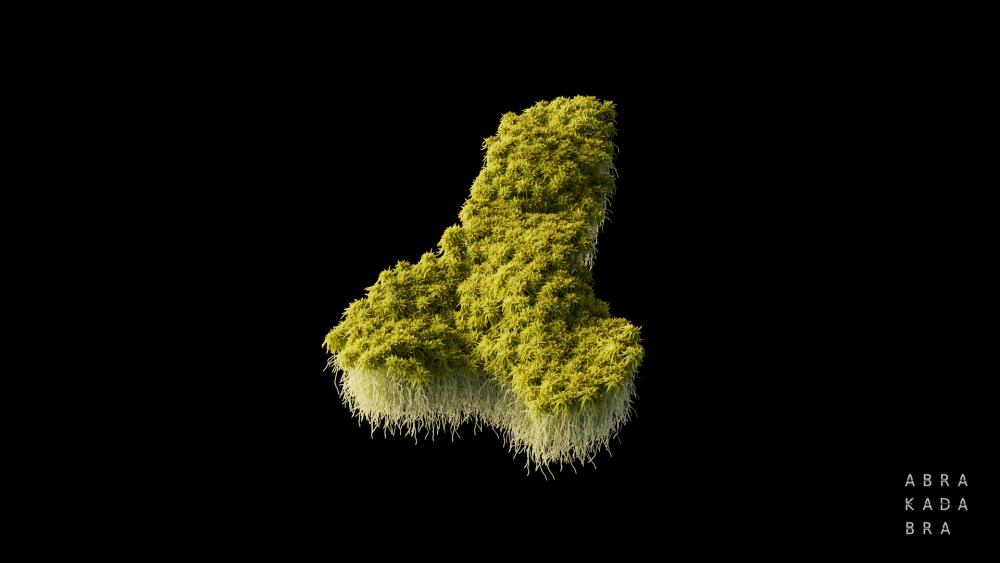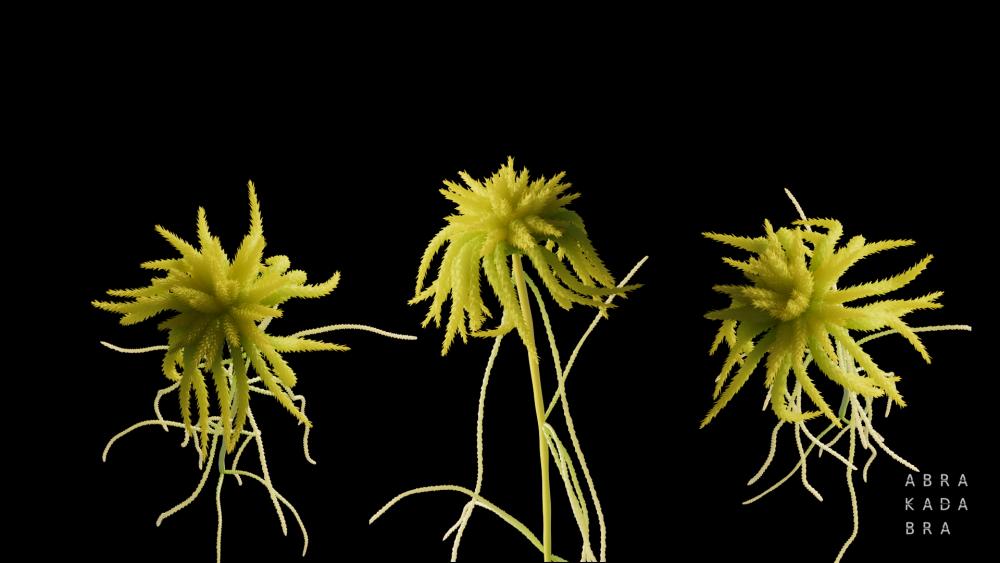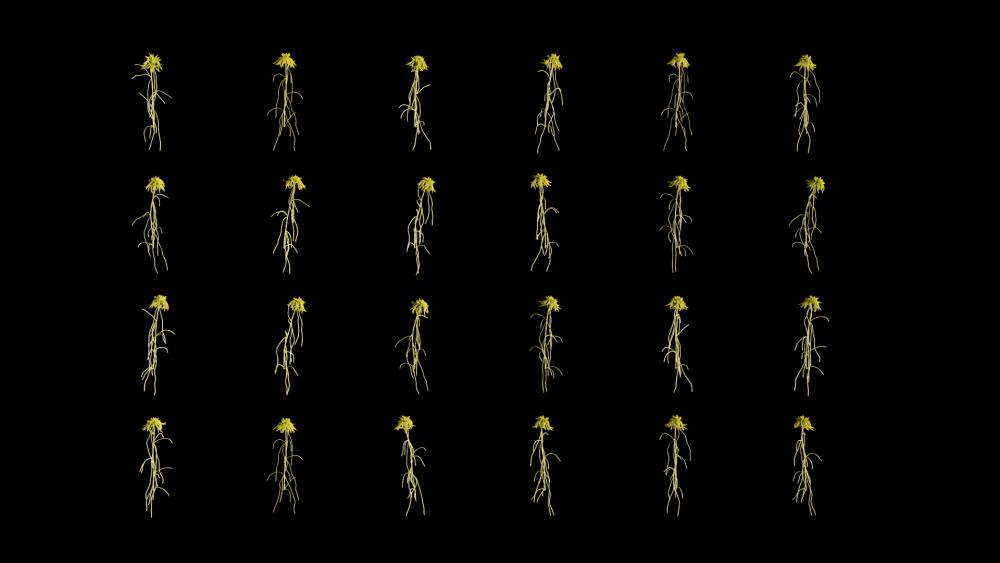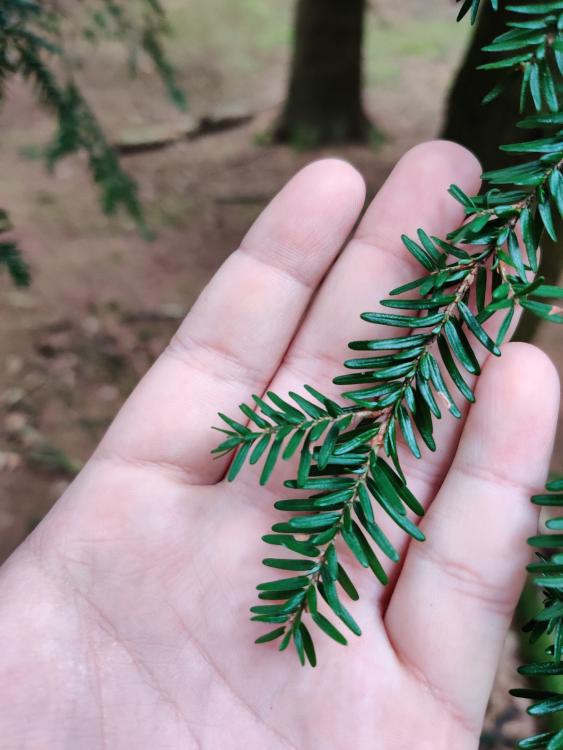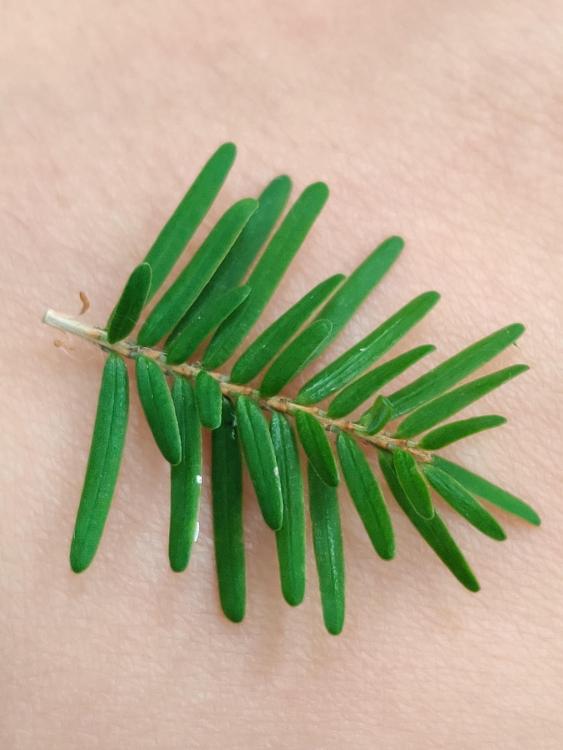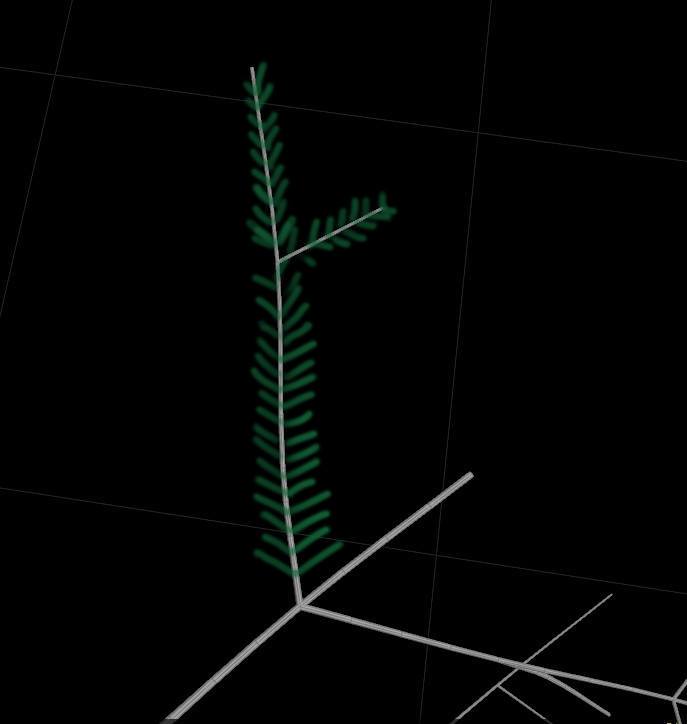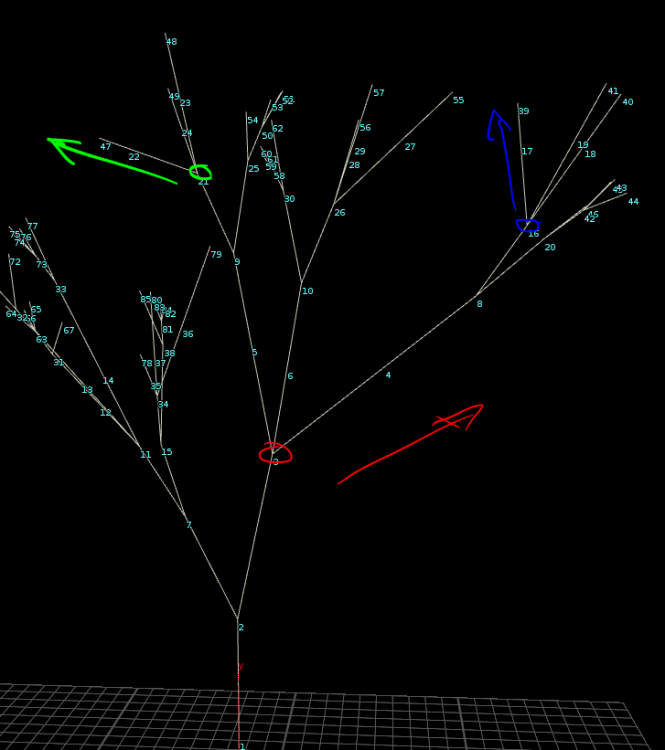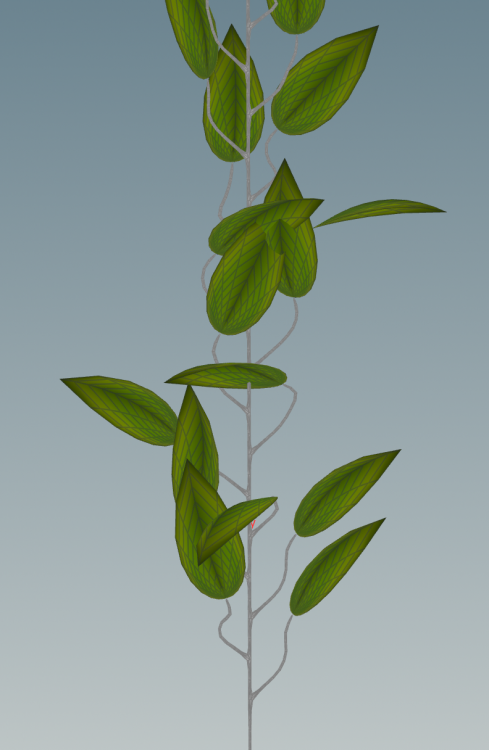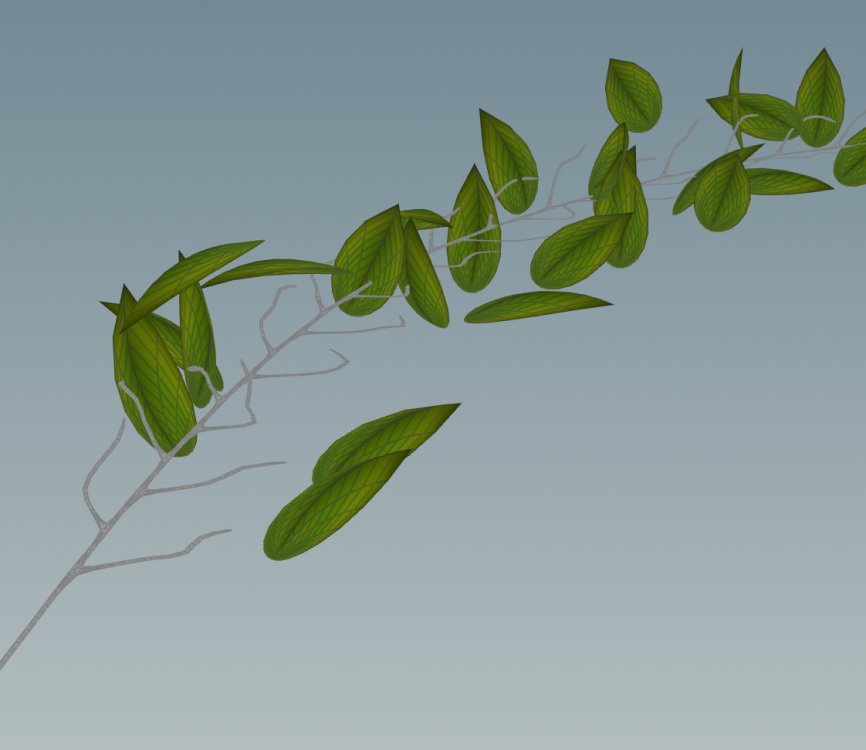Search the Community
Showing results for tags 'L-System'.
-
Hello, After a few tutorials and google I can create a basic tree from the l-system But the thing is the trunk mesh is quite not clean and has some twisted areas, And the connection between branches to the trunk is not natural for closed up shot. So my question is Is there any way to get a clean shape from the l-system? If i used the skeleton from the l-system to generate the mesh then some area on top has missing connection and the polygon number rises dramatically If I use labs tree generator then the trunk has some twisted areas in the middle and i dont know how to put the branch in the right position Also tried to create vdb from it, but it will increase polygon number dramatically The goal i looking for is the first image Thanks for any advice ASk_TRee.hip
-
Hello magicians. I want to share with you the result of studying l-systems. Behold the Moss Incredible aka Sphagnum! Redshift shading. And yes, it is growing. Available on https://gum.co/fZROZ https://gum.co/qmDmg Thanks! akdbra_moss_grow.mp4 akdbra_moss_var.mp4
-
Hello everyone, I am trying to make a Pine-type tree with the L-System and I am currently stuck with properly attaching leaves. The leaves on this Pine tree that I am currently working on are a bit tricky because they grow on the sides of the branch (see the reference image that I’ve taken). Now I am looking for a way how I could scatter points only to the sides of the branch and that normals would point to the side too and then I could just “copy to points” those leaves. Just like it is in the photo I've drawn on.
-
Greetings. I can't throw away my idea about creating forest and plants generator. And for this purpose i will use houdini l-system. Yes, this is hard, but other systems usefull only for bushes or some abstract plants, i think. It will be long project. Later will add some progress pictures.
- 25 replies
-
- 1
-

-
- procedural
- flora
- (and 4 more)
-
Hello, Does anyone know a way to get the pivot point of each prim from an L-System? I'd like to use this for animating bends and rotations but I'm not sure how I would go about it. Logically I need to find the nearest point on the previous gen to the 0 point of each primitive but it must also take into account the transforms of the previous gens too. I looked in to matt estela's rotation matrices but this doesn't account for the previous gen's transforms. Any help greatly appreciated. http://www.tokeru.com/cgwiki/index.php?title=HoudiniVex#Rotate_prims_around_an_edge.2C_alternate_version
-
Hey magicians! I just saw a wonderful L-System sample video by Danndx and I wonder how a setup like this could be achieved? I love procedural growth / pattern stuff, seems he used a solver and some vex, any tips on how to achieve similar stuff? Thanks! Cheers!
-
Hello everyone. I am working on a growing vines effect with the use of L-system. I want my L-system to be deformed by the curve and controlled with carve SOP. I have set up the initial network, however the main problem I encounter is the fact that the leaves anchor points are deformed in the way that it doesn't match the L-system branches. (see the screengrabs) Non-deformed L-system Deformed L-system with non-matching leaves I attached my hip file, any help would be appreciated: growing_lsystem_vines_01.hipnc
-
Hi, I have a question regarding using alembic format to export an animated l-system to maya. I was able to succesfully export my l-system (which is a flower) to maya, however i was wondering how would i perserve groups from houdini. Since when i export it to maya the l-system has no materials and is exported out as a single mesh AND applying materials to the leaves, stem, blossom would be very tedious face by face. What is the best way to approach this ? I have a deadline coming up very soon and ANY help would be really, kindly greatly appreciated !!! Kind Regards, Vaco
-
MA Digital Effects 1213 - Bournemouth University - NCCA National Centre for Computer Animation Synopsys: "Daphne" takes inspiration from the “Daphne myth”, a metamorphosis where a nymph was transformed into a laurel tree after escaping from the love of the god Apollo. Houdini: Development of an asset for the interaction between dummy geometry and L - System. Software: Houdini FX - Side Effects: L-System (asset), Modelling, Shading, Lighting and Rendering (Mantra), Nuke - The Foundry: Compositing, PF Track - The Pixel Farm : Geometry Tracking. video: http://vimeo.com/73346747
-
cmiVFX Releases New Houdini Destructive Cracking Techniques High Definition Training Videos for the Visual Effects Industry Princeton, NJ (May 1st, 2013) cmiVFX has released their newest lesson Creating Cracks Digital-Asset in Houdini. Voronoi fracture is powerful but also has some limitations. How we can have full control over the shape of the pieces? How we can make animation for crack propagation? How we can break only certain parts of an object while other areas remain intact? In this lesson Mehdi Salehi reveals a new VFX technique in Houdini. In this lesson we will create a new digital asset to answer these questions. This new tool can use patterns for creating cracks. You will learn that almost anything can be used as the pattern. For example, You can use lines, L-system or image files as the pattern. You will learn our new digital asset has even more power. It can be used to create precise tear patterns for cloth simulation even for low poly objects. This lesson offers new exclusive effect technique which is recommended to all Houdini users. VIMEO TEASER HERE: https://vimeo.com/65339465 Short Description The aim is to create a tool to use a predefined crack pattern such as image files, wires or L-systems for cracking an object. No previous knowledge or experience is required to easily follow along. Mehdi Salehi tackles several examples to cover Rigid body and cloth simulations using this new tool. NOTICE TO VIEWERS: (No previous Houdini knowledge is required to follow this lesson. Crack Digital asset is included.) |||||||||||||||||||||| New Houdini Destructive Cracking Techniques |||||||||||||||||||||| ---> http://cmivfx.com/tu...king Techniques Chapter Descriptions Introduction A quick view on all chapters. It Shows where we start and where we go; A map for our great adventure!!! Basic Knowledge This chapter gives important clues about images and Houdini. It shows you how Houdini can give life to still images. It is our starting position. Creating The Asset In this chapter we evoke the power of COPs (channel operators)! This chapter shows you the main idea for creating the crack digital asset. It teaches you how to use the crack pattern for creating precise cracks on an object. Anything such as L-systems or curves can be used as a crack pattern. The power is that precise cuts are possible even for low poly objects. Crack Asset And Rigid Body Objects This chapter talks about simulating the pieces created by the crack asset. It shows the problems of using fracture rigid body dynamic and how we can deal with them. Also, you can see how cracks can be animated to create a crack propagation effect. There are two examples here. In the first example, the chapter discusses about how to use the crack asset for breaking a car window. You will learn how to create crack propagation and also how to simulate the pieces. In the second example the chapter talks about using the crack asset to break a bottle. The cool thing is that only specific area of the objects affected by crack asset and the other areas remain intact. A powerful feature for rendering broken glass!!! Crack Asset And Cloth Objects The other possible use of the crack asset. A journey to cloth simulation! This chapter shows you how this new crack asset can be used for cloth simulation. Now it is possible to create precise tear patterns and then simulate them. You can even animate tearing of a cloth object. The cool thing is that the cloth object can be a fairly low poly object. Also this chapter shows you some important notes and tricks about simulating cloth objects. About the Instructor My name is Mehdi Salehi. I started my journey to the mysterious world of 3D and VFX about 10 years ago and have worked as CG artist and VFX supervisor for many companies. Now, it is my honor to be a member of the cmiVFX family. My hobbies are music and football, of course playing, not hearing or watching! My Email is msalehi.164@gmail.com. If you have any questions please feel free to contact me. Project Contents All cmiVFX videos come with all the training materials you can need right from our website. No matter what time of day, your location, or how your feeling, cmiVFX will be there waiting for you! This video is available today at the cmiVFX Store: http://store.cmivfx.com/ About cmiVFX cmiVFX is the leader in High Definition Video Training for the Visual Effects Community. Register for FREE and receive hours of FREE content at the cmiVFX Video-on-Demand Player. ( http://store.cmivfx.com/login ) For additional information about cmiVFX, visit http://www.cmivfx.com or email eric@cmivfx.com © 2012 cmiVFX | cmiStudios. All rights reserved.
-
this is example from The Algorithmic Beauty of Plants. here & - Correction of segment orientation H due to phototropism T (& in Houdini - only one of turtle rotations) how can I implement this correction in Houdini? T-tropism in houdini - its only gravity but I need gravity & phototropizm. thanks!
-
Hello , 1st post here . Just started learning Houdini .LOVE it so far (evn though its really hard for my level ) .I saw couple of tutorials online and recently so L-sys video in sideeffect site . I tried out few things and this is wat i came up t so far . Hope u guys help me improve it . I created the leaves and plants( took help from the book The Algorithmic Beauty of Plants )in separte l-sys and used it as j ,k . But i found this very heavy on my system . is ther anyway i can make this light on my system . i dont have an expesive machine .My dream is to make a awesome looking forest scene . shading is really rough pls dont mind . Cheers Eloi


